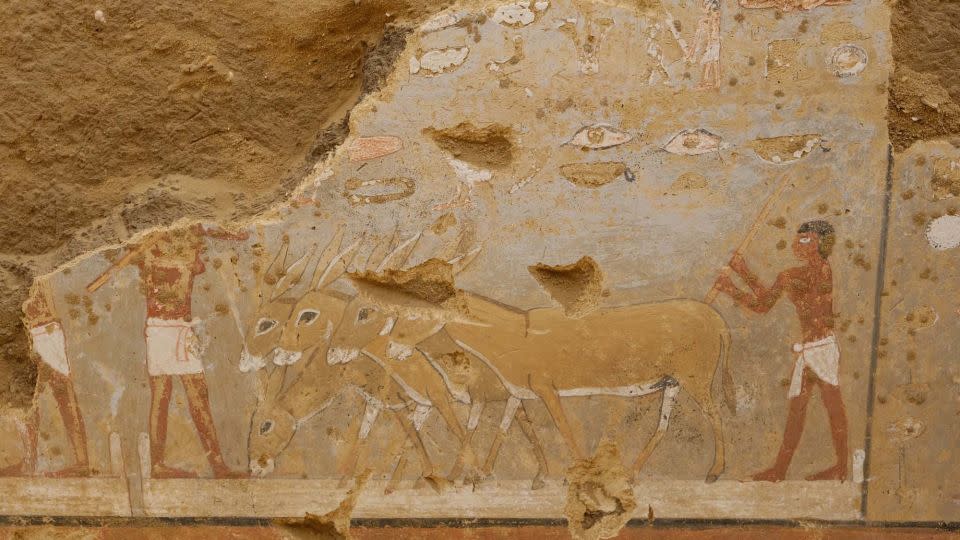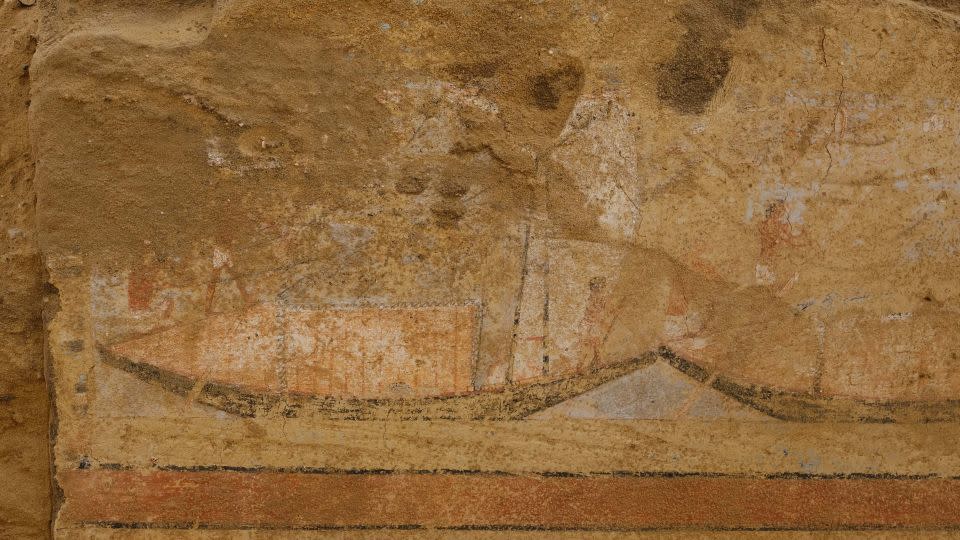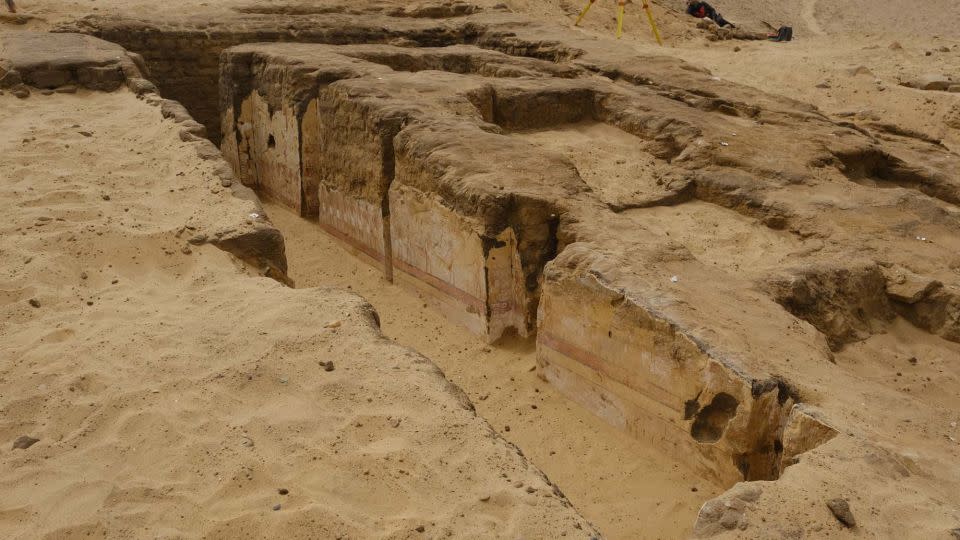Colorful paintings of daily life uncovered in 4,300-year-old Egyptian tomb
Colorful paintings of daily life in ancient Egypt have been discovered in a tomb dating back more than 4,300 years.
The tomb, known as a mastaba, was found in the pyramid necropolis of Dahshur, about 25 miles south of Cairo, during a recent Egyptian-German archaeological mission.
Dahshur is the southernmost of the great pyramid necropolises of the Old Kingdom in the vicinity of the ancient capital of Memphis. The main attractions there are two large pyramids of King Sneferu: the so-called Bent Pyramid and the Red Pyramid.

Made from unfired mud brick, the rectangular mastaba measures about 26 feet by 39 feet (8 meters by 12 meters) and features seven burial shafts, as well as another shaft for ceramic bowls and other items used in burial rituals.
According to inscriptions on a massive limestone false door, the tomb belonged to a man named Seneb-nebef, who served in the administration of the residents of the palace district, as well as his wife, Idut.
The shape of the mastaba, together with the inscriptions, images and ceramics found inside, suggest it dates from the end of the 5th or the beginning of the 6th dynasty -approximately 2,300 BCE.

Stephan Seidlmayer, former director of the German Archaeological Institute in Berlin, led the expedition.
He told CNN in an email: “The corridor and the cult chamber were decorated with subtle paintings on mud plaster - a rarity in the necropolis of Dahshur. Despite extensive destruction, numerous images have been preserved. They show pictures of the tomb owner and his wife in front of the offering table, scenes from daily life - donkeys on the threshing floor, ships on the Nile, a market place - and servants who bring gifts for the mortuary cult.
“In their elegant forms and perfect execution, the pictures offer valid evidence of the artistic milieu of the capital region of the developed Old Kingdom.”
According to a statement from the Egyptian Ministry of Tourism and Antiquities, inscriptions revealed that the owner of the tomb “held several positions in the royal palace in the administration of tenants,” while his wife “held the titles of Priestess of Hathor and Lady of the Sycamore.”

The German Archaeological Institute Cairo has been excavating at Dahshur since 1976. The initial stages focused on the pyramids of King Sneferu from the Old Kingdom and King Amenemhat III from the Middle Kingdom.
More recent excavations have, however, centered on the tombs of great statesmen, priests and administrators from same eras.
Seidlmayer and his team will continue to excavate the site “in an attempt to search for more secrets of this area,” the Egyptian Ministry of Tourism and Antiquities said in its statement. It added: “Cleaning and documentation work will be carried out on the tomb and its inscriptions during the coming period.”
For more CNN news and newsletters create an account at CNN.com


